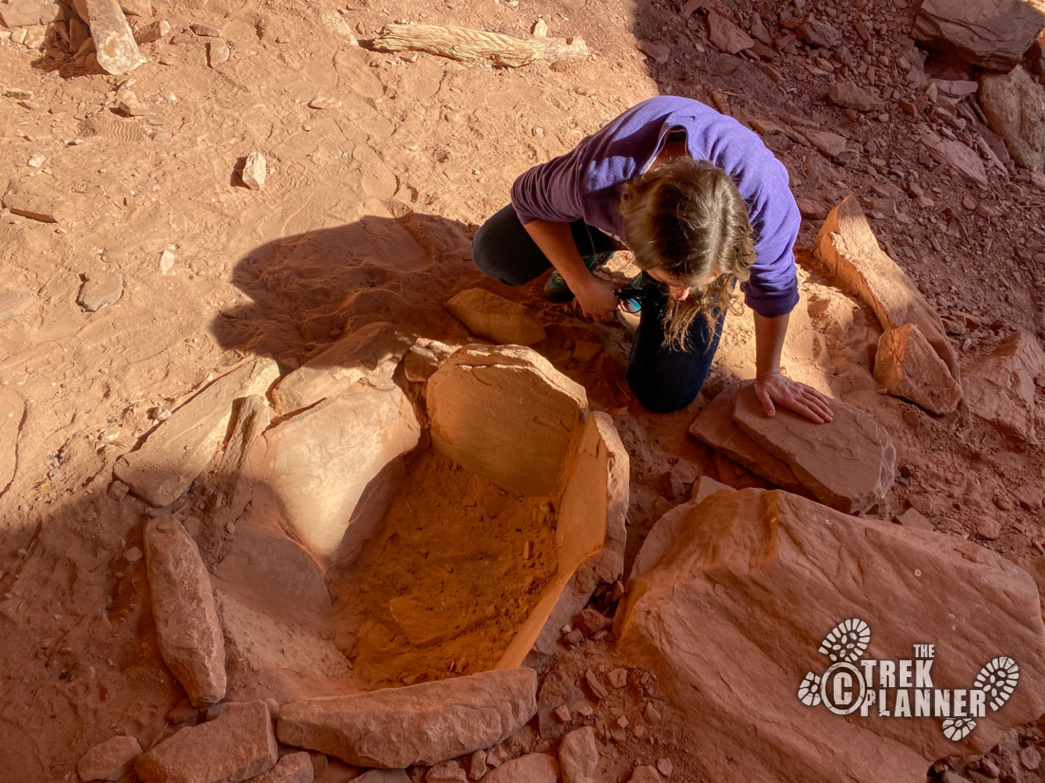
Trek Planner Insider Content
Thank you for being a member!

The Trek in a snapshot
Location
Greater Moab Area, Utah
Managing Agency
BLM
Pets
I wouldn’t bring pets on this adventure. There is too much cryptobiotic soil and tricky terrain for dogs
Fees
None
Restrooms
None
Camping
Not allowed
Trail Condition
There is only a very narrow trail for the first 1/4 mile. The trail disappears after this point. You will then need to hike through dry washes to avoid the cryptobiotic soil and other small obstacles.
Sights
“Granary Arch”, a ruin, beautiful sandstone scenery
Water Info
Bring 2 liters of water
Best Season
All
Distance
2 miles roundtrip
Time Required
2+ hours
Parking Elevation
3960 ft.
Summit Elevation
4328 ft.
Elevation Difference
368 ft.

Trek Planner Maps
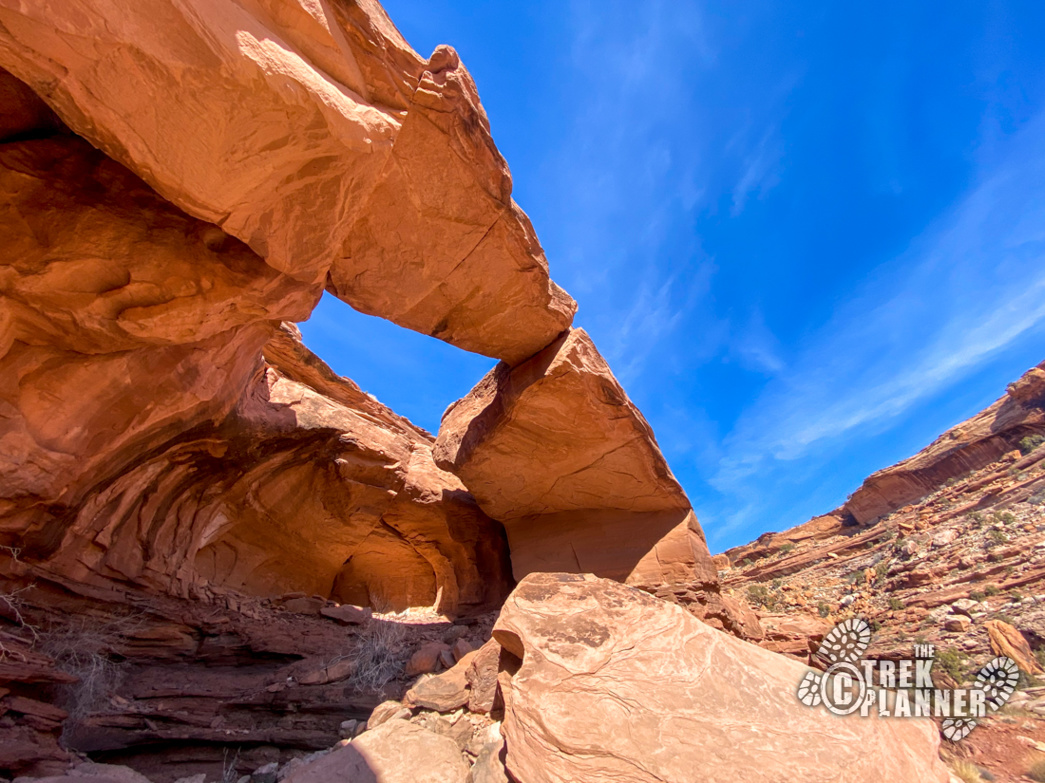
Parking: 38.5786, -109.63613
Buckle Arch: 38.58753, -109.64323

Experience. Discover. Explore.
Follow along on our adventure then go out on your own!




For this Trek, I changed the name of the arch because it has a 700-1000+ year old granary that deserves protection. The name of the arch is called Buckle Arch. Please do not post the name or location to this arch on blogs or social media. I will share this with Insiders because I know you are respectful and will enjoy this ruin without harming it 🙂
Note: The parking for this Trek is the same parking as Jeep Arch along Highway 279. Just use the “Parking” GPS coordinate above. There isn’t trail sign pointing you where to go, so you will need to use our map. Or you can always just hike whichever way is best. We found a narrows trail that went straight up to the railroad trails. We crossed over the tracks and followed another trail to the cliffs to the northwest.
Hiking to Granary Arch wasn’t too difficult. Most of the elevation is gained in the first 1/4 mile of the hike. The hardest part about this adventure is that there isn’t a trail after the first 1/4 mile. We found a few game trails, but mostly we were hiking to avoid stepping on the cryptobiotic soil.
We found Granary Arch by accident. Before this trip, I was looking at some satellite photos and found a white circle located on top of some cliffs. I wasn’t sure what this white circle was, but thought it would be fun to fly a drone up to check it out. Well, the drone didn’t like the cliffs and it was losing connectivity with the controller, so we only got some a few photos from a distance. The photos we did take made the white circle look like part of an airplane, a UFO, or something else! We decided to hike up to it and see it up-close!
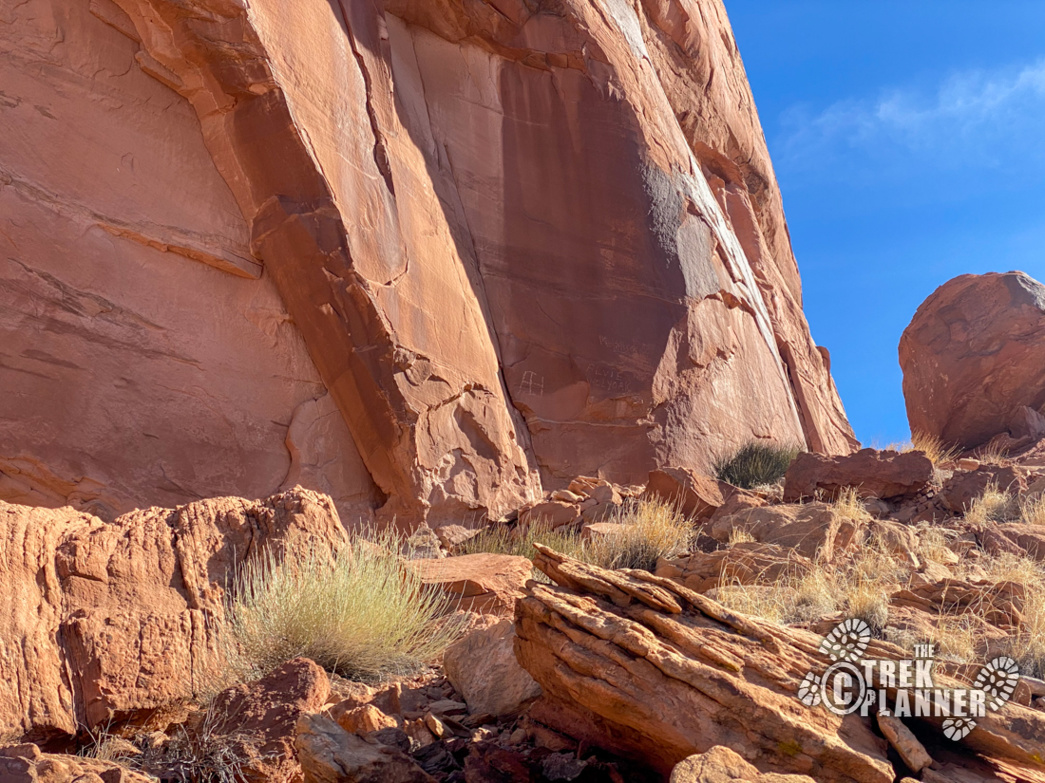
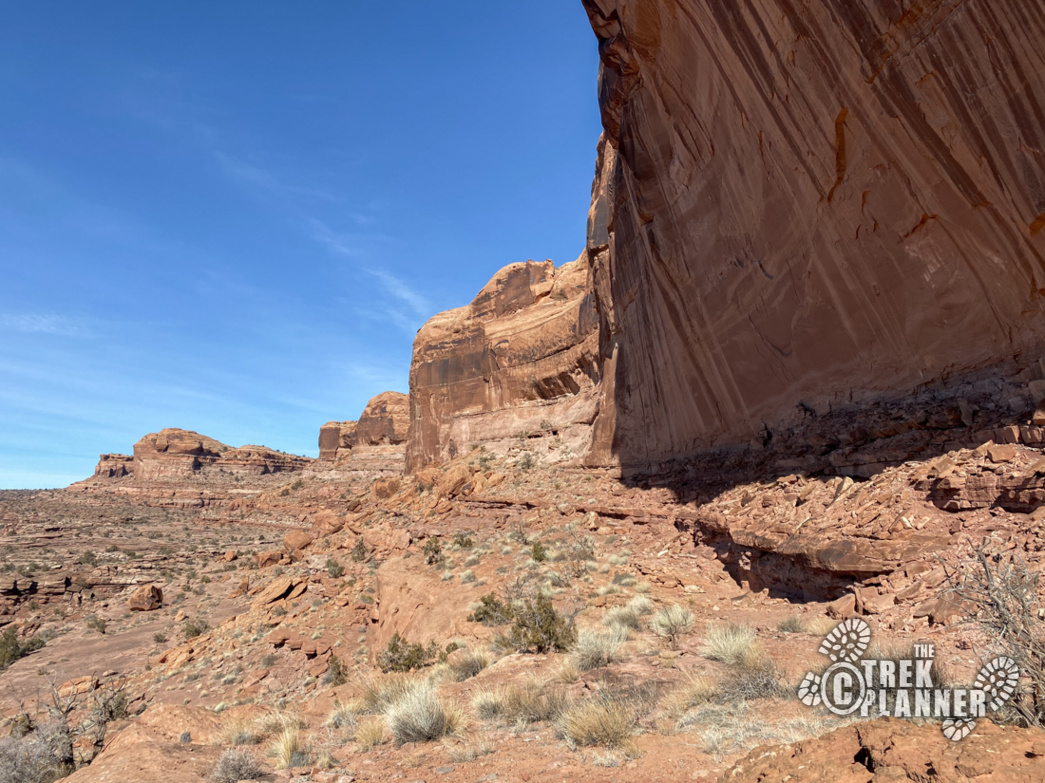
We scouted out the area to find the best route and found a decent trail that would snake around until we got to the white circle. It probably isn’t the most direct route, but it provided a way that would be safe (there was still snow on the north facing areas).
The hike was steep at the beginning, but we enjoyed the views as we got higher. Since we have found petroglyphs at some other nearby sites, we were constantly scanning the walls and large boulders for any signs of rock art. The only rock art we did find was some historical graffiti from previous visitors.
Let me emphasize that there is SO MUCH cryptobiotic soil on this adventure that you will really need to be aware and be careful where you step. There are lots of narrow dry washes to hike through, but we seemed to always be dancing around the precious soil as we were jumping on rocks and climbing on boulders to avoid stepping on the bacteria. Why do we care about cryptobiotic soil? For one thing, the soil absorbs water faster to help resist erosion. The soil is full of organisms that can sustain desert plants and life. The soil looks black and is crusty.
After a while we looked at what we thought was an arch in the distance. We could see some light shining though the top part of it and so we decided to hike right up to it. It’s an arch! It was a fun surprise and we ate a few snacks here and enjoyed the view of the canyon below! The arch was at the front of a small alcove that you can hike inside. We were again looking for petroglyphs when we found a ruin at the back of the alcove!
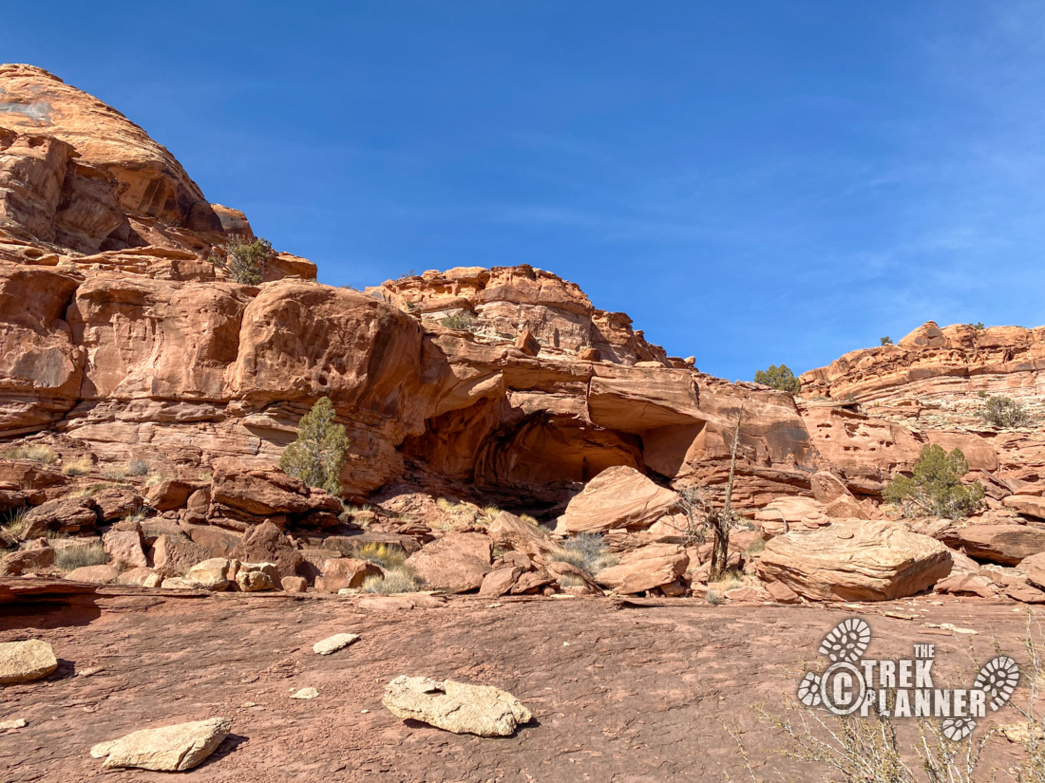

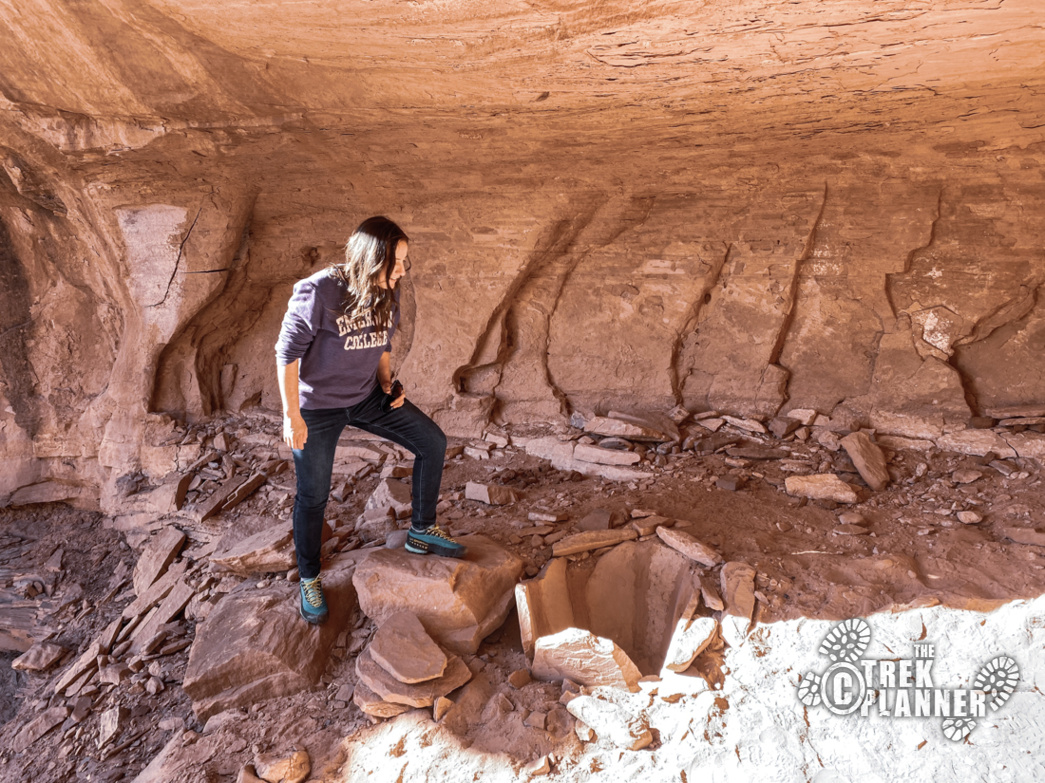
The ruin looks to be some sort of ancient granary or storage container. It had rock slabs that were “glued” together with some type of mortar. This was probably water tight and able to store a good amount of corn, squash, beans, or other things. Looking at the other rocks under the alcove, it appears there could have been more ruins. We didn’t find any petroglyphs, but we found a really neat arch with a ruin! I love stumbling on this type of stuff!

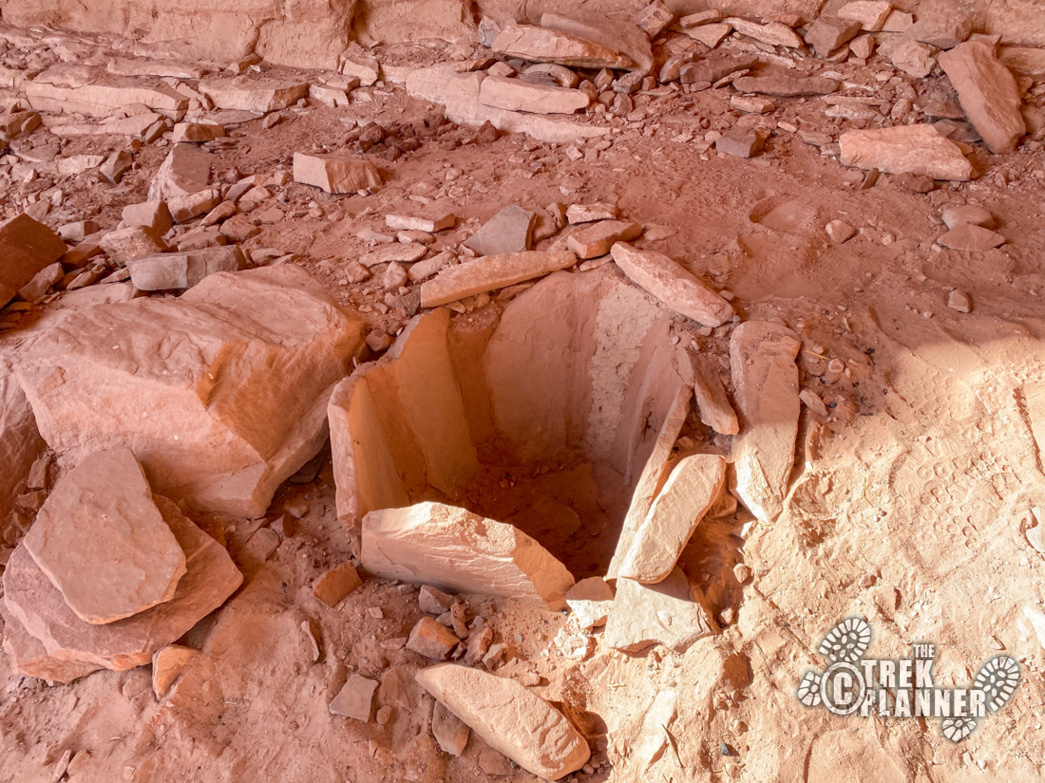
These pictures are hidden because they show a very common view of the area next to Colorado River and would give off the location of this arch. I want to protect this granary, but also want like-minded people, like yourself :-), to see this wonderful site! Trek Planner Insider Members are some of the best nature respecting people out there!
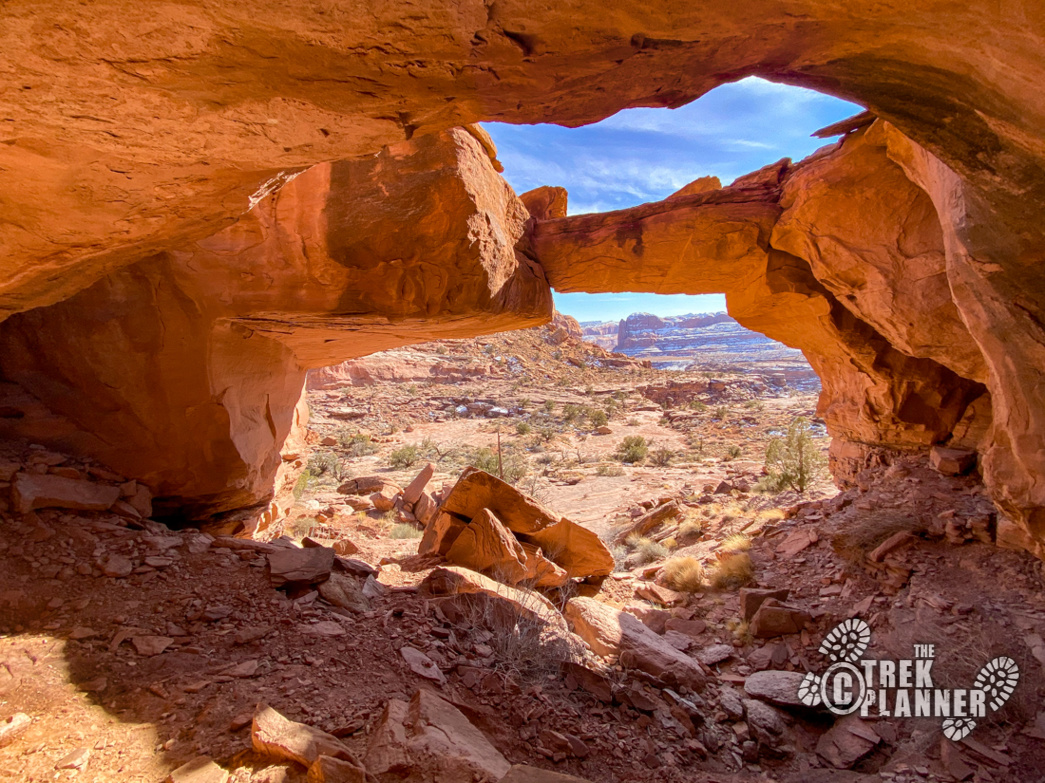

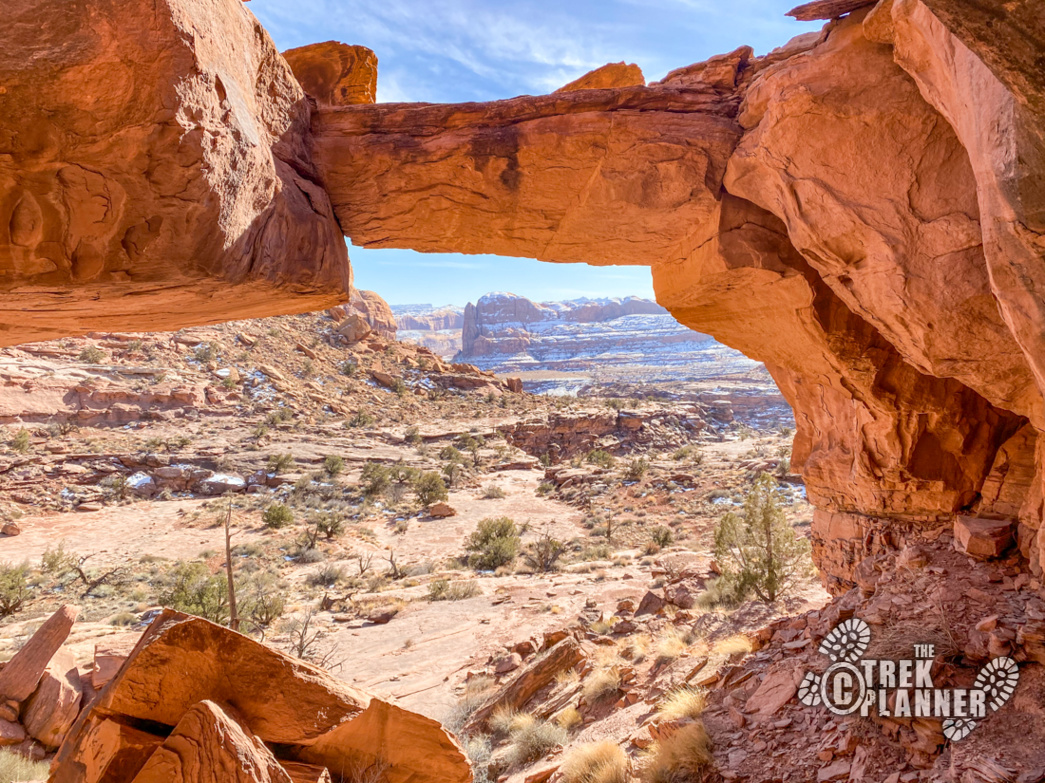
It might be tempting to go around picking up every rock trying to find any artifacts, but please know that this is a special place that deserves our respect. Please enjoy the ruin and the arch, but please do not disturb the ruin. Watch where you step while you’re here. Take lots of pictures!
There are other ruins in the area that are dating anywhere from 700-1000+ years ago, so this ruin could possibly be in the same age as those.
There is a very small slot that you can climb to get on top near the arch. I wouldn’t recommend getting on top of the arch because it looks fragile and dangerous, but you can get a good view of it looking down.
From here we continued up to the white circle (which we will write-up in a different post).
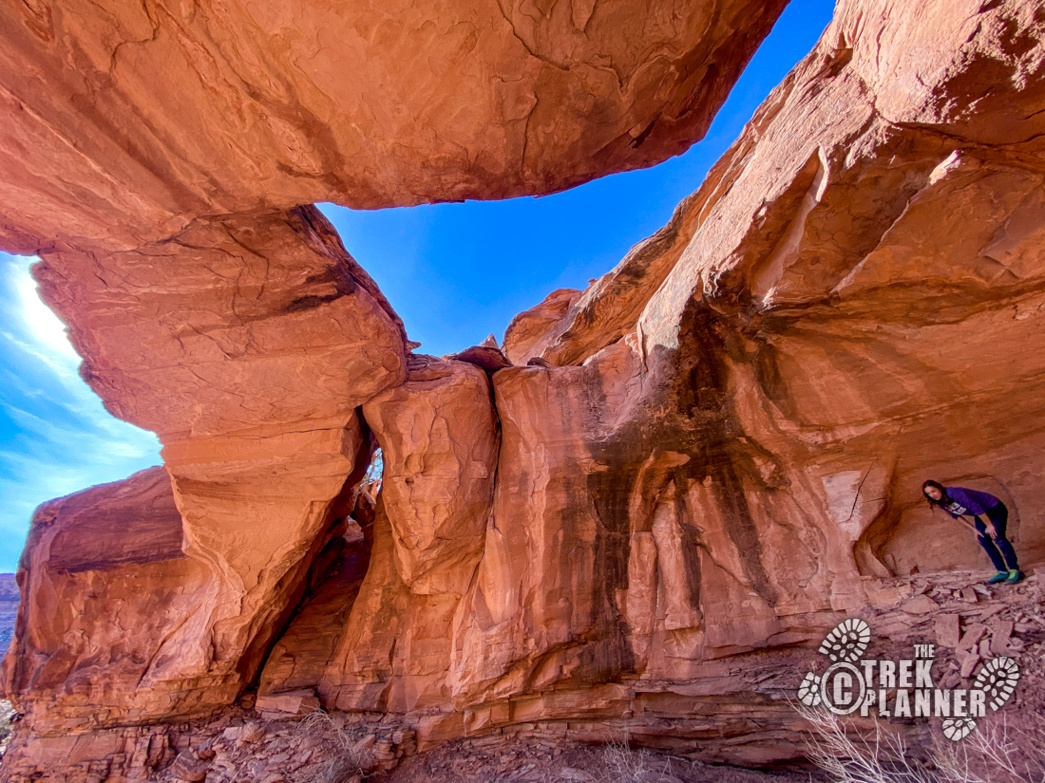
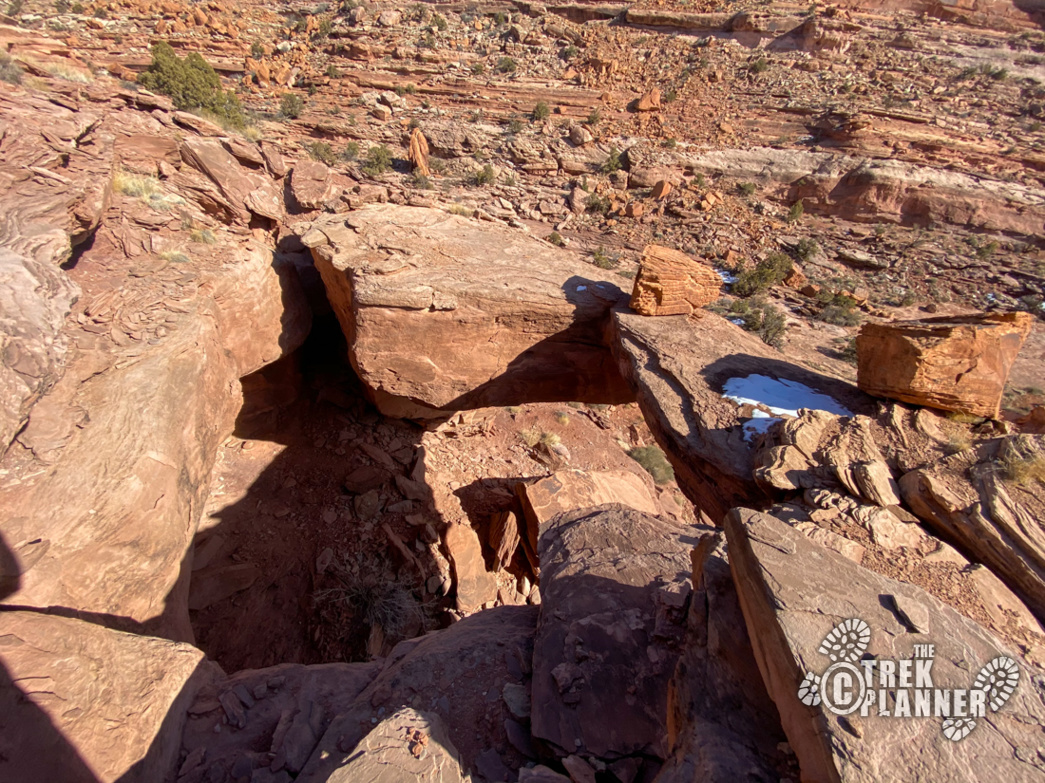
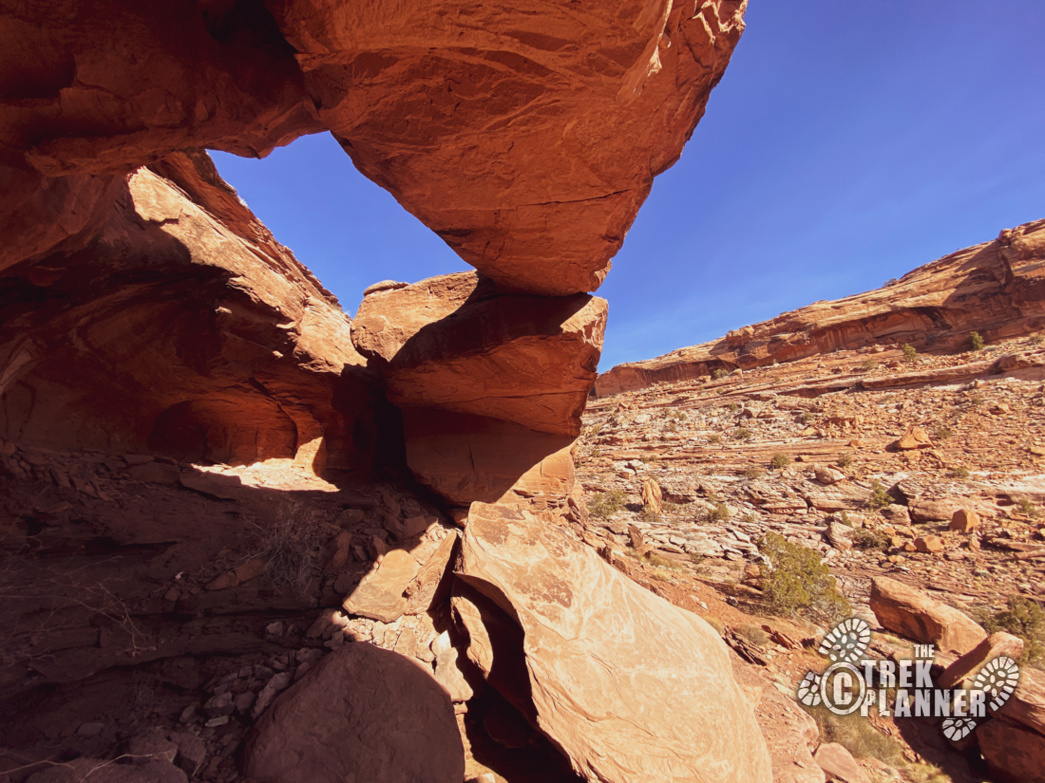
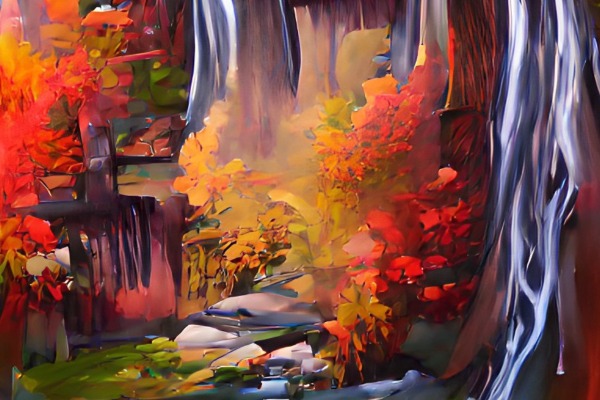
Personal Thoughts
I love natural arches and I love ruins! While everyone else is hiking in Arches National Park and Canyonlands National Park, come visit this special and unique arch that quietly stands in this seldom visited part of Moab.

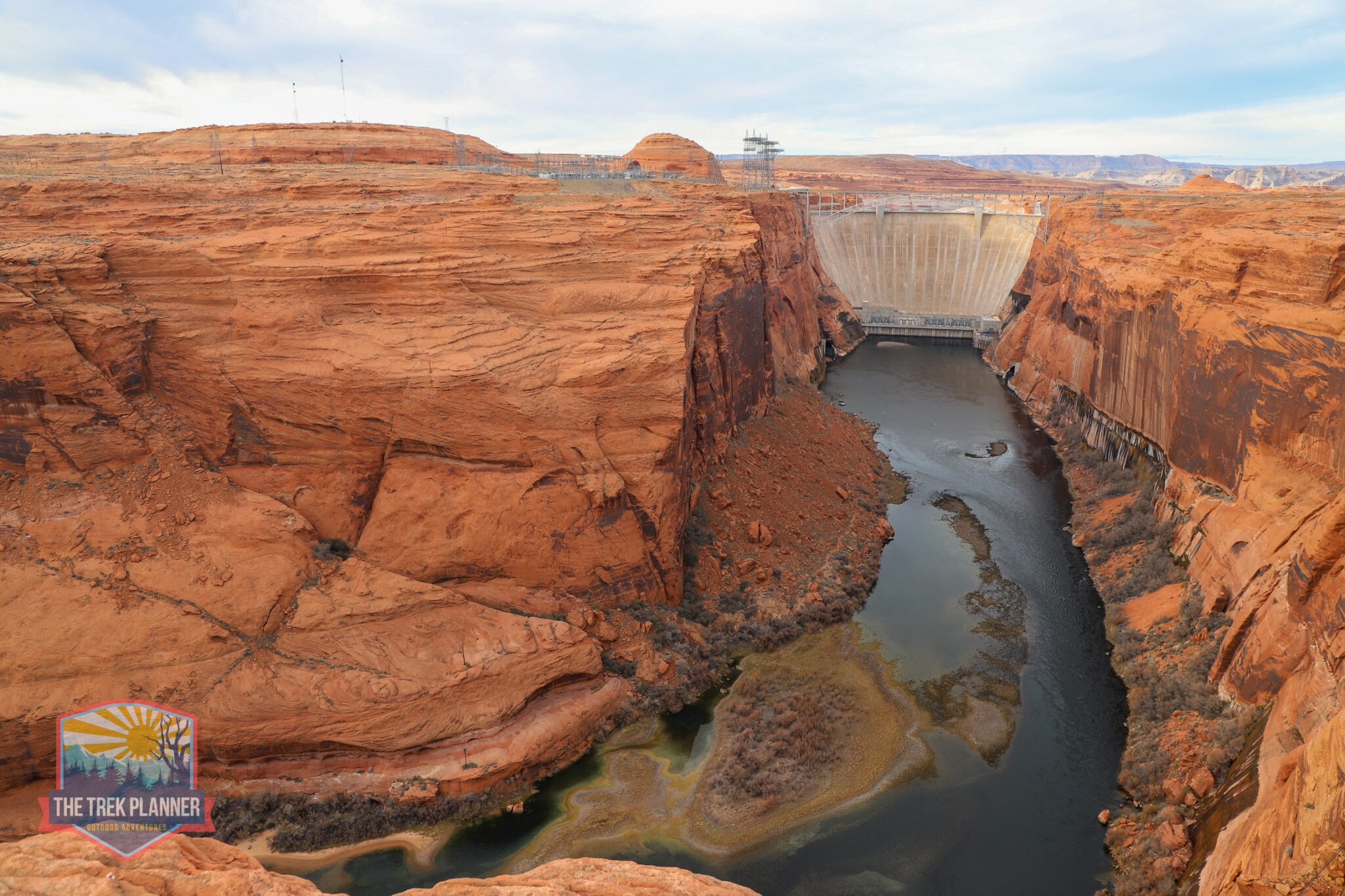
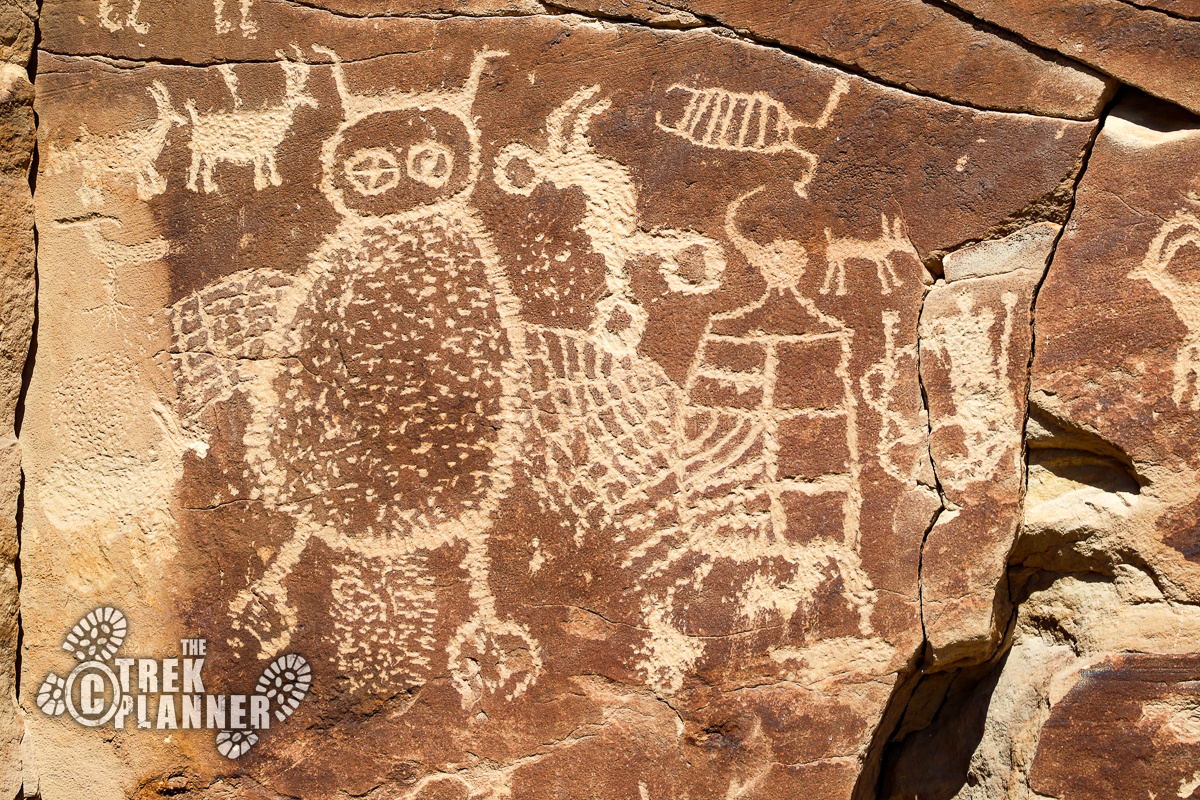

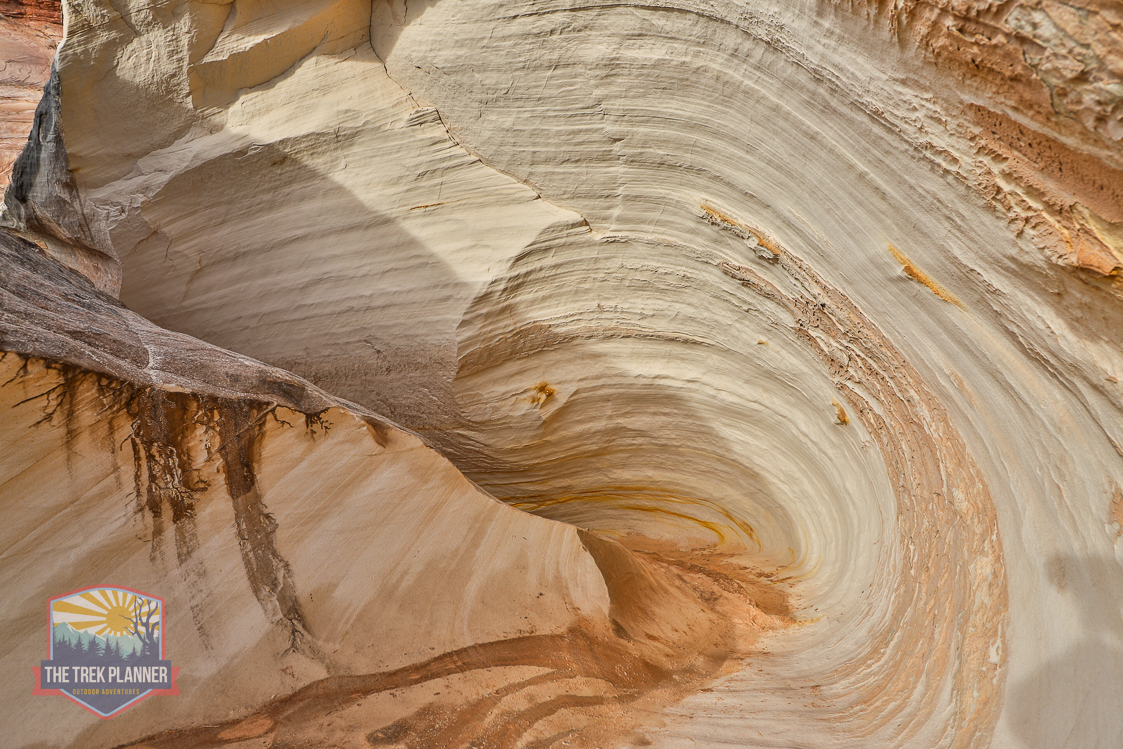
Hi Jeff…. never been to Moab… going next week… the cyrptobiotic soil….. is it fairly obvious on its appearance?… definitely dont want to be walking where I shouldn’t be… thanks!
Hey Chris! Firstly, I just want to say THANK YOU for being an Insider member on our website! It really means a lot to me! The cryptobiotic soil isn’t always apparent. Sometimes it’s black in color and about 5+ inches tall. Other times, it’s just a slightly darker brown than the surrounding soil. It’s very crusty and looks like little mounds of hardened mud. I posted a picture of an example of the darker crypto soil. I am thankful you are concerned to watch your step here! Just follow the dry washes and the sandstone areas and you will be fine. It… Read more »